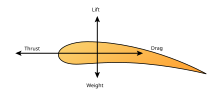Aerodynamics governs how objects move through air by managing four fundamental forces: lift, drag, thrust, and weight.
Core Principles of Aerodynamics
Forces in Motion
Lift counteracts weight and keeps aircraft airborne, while thrust overcomes drag to enable forward motion. These forces interact continuously during flight, determining speed, direction, and stability. The shape of wings creates pressure differences that generate lift through Bernoulli’s Principle.
Historical Development
The modern understanding of aerodynamics emerged in the 17th century, though humans utilized aerodynamic principles for millennia in sailboats and windmills. Sir Isaac Newton established the first air resistance theory in 1726, while Daniel Bernoulli published his groundbreaking relationship between pressure and velocity in 1738.
Applications and Challenges
Aircraft Design
Engineers must balance competing factors when designing aircraft. Wide-body aircraft face increased drag compared to narrow-body aircraft, requiring careful optimization of the fuselage’s fineness ratio. The surface area exposed to airflow (wetted area) directly impacts drag, making efficient design crucial.
Flow Control Technologies
Modern aerodynamics employs both active and passive flow control techniques:
- Separation control for enhanced control effectiveness
- Laminar and turbulent flow management for drag reduction
- Virtual surface shaping for performance optimization
Performance Limitations
Turbulent air behind aircraft (wake turbulence) reduces downforce on following vehicles, making overtaking difficult in racing applications. The high coefficient of drag in Formula 1 cars comes primarily from exposed wheels and wings generating downforce.
Future Developments
Breakthrough technologies will be required to meet growing demands for:
- Improved safety
- Environmental compatibility
- Increased capacity
- Economic viability
Research continues in areas like hybrid laminar flow control (HLFC) and noise reduction for large transport aircraft. Computational fluid dynamics now enables entire aircraft design through computer software, though wind tunnel testing remains essential for validation.
Citations:
In fluid mechanics, an aerodynamic force is a force exerted on a body by the air (or other gas) in which the body is immersed, and is due to the relative motion between the body and the gas.


English
Alternative forms
- aërodynamics
Etymology
From French aérodynamique, from
...
